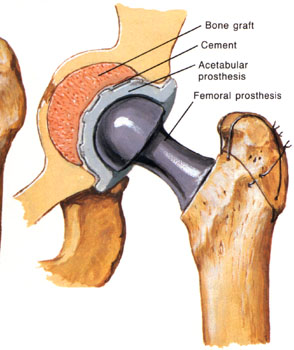In the spirit of the last few articles that shows the latest in science and technology of what studies are being done to research for ways to regrow bones and cartilage, I wanted to bring up 4 articles which I found which talks about the topic. I will be doing a quick outline on each of the articles. Most of the outline will jus tbe me cutting and pasting what I feel are the most important points of the article
Article 1: Bone Grown From Human Embryonic Stem Cells – ScienceDaily (May 14, 2012)
Article 2: Bone Repair Using Patient’s Stem Cells Comes Closer – ScienceDaily (May 28, 2008)
Article 3: Pioneering Induction of Bone Formation Using Embryonic Stem Cells – ScienceDaily (May 17, 2008)
Article 4: Scientists Closer to Making Implantable Bone Material – ScienceDaily (July 29, 2009)
Article 1: Bone Grown From Human Embryonic Stem Cells
A post-doc named Darja Marolt wrote a paper talking about a study she did at Columbia University under which showed that human embryonic stem cells can be used to grow bone tissue grafts for use in research and potential therapeutic application. It is the first example of using bone cell progenitors derived from human embryonic stem cells to grow compact bone tissue in quantities large enough to repair centimeter-sized defects. The implanted bone tissue supported blood vessel ingrowth, and continued development of normal bone structure, without demonstrating any incidence of tumor growth when the technique was tested on lab rodents. Dr. Marolt’s work is a significant step forward in using pluripotent stem cells to repair and replace bone tissue in patients.
Dr. Marolt has continued to build upon this research as an Investigator in the NYSCF Laboratory, developing bone grafts from induced pluripotent stem (iPS) cells. iPS cells are similar to embryonic stem cells in that they can also give rise to nearly any type of cell in the body, but iPS cells are produced from adult cells and as such are individualized to each patient. By using iPS cells rather than embryonic stem cells to engineer tissue, Dr. Marolt hopes to develop personalized bone grafts that will avoid immune rejection and other implant complications.
Article 2: Bone Repair Using Patient’s Stem Cells Comes Closer
The research was carried out at the Tissue Regeneration Department of the University of Twente’s Institute for Biomechanical Technology (BMTI). Enzyme induces adult stem cells to grow bone. In animals, ‘adult’ mesenchymal stem cells have already been used successfully to grow fresh bone. Until now it has been difficult to induce adult human stem cells to produce bone. If the enzyme PKA is previously activated in the stem cells in the lab, following implantation this results in substantial bone formation. It produces a dramatic improvement in ‘in vivo’ bone growth. The cells can be observed maturing into bone cells already in the lab. This opens up new ways of repairing bone tissue using cell material from the patient.
The enzyme protein kinase A (PKA) is responsible for many processes in a cell. The messenger ‘cyclic AMP’ activates PKA: adding it to the stem cells ensures that they stimulate one another, the researchers think. Not only does cyclic AMP promote maturation into bone cells; the cells themselves also secrete various substances that stimulate bone growth. This may explain why mesenchymal stem cells treated with cyclic AMP form significantly more bone than those without the stimulus.
The advantage of administering a bone-growth-stimulating substance in advance is that it can be removed just before implantation. Experiments to date have mainly used high concentrations of a bone-growth-stimulating hormone, e.g. incorporated in the carrier on which the cells are ‘sown’. In the new approach not only are the hormone concentrations lower, they also more closely resemble the cocktail of hormones normally involved in bone growth.
Article 3: Pioneering Induction of Bone Formation Using Embryonic Stem Cells
There is a new breakthrough in stem cells research from successfully creating bone tissue “in vivo”, using embryonic stem cells. The scientists at University of Twente imitated bone formation in embryos and children, which uses cartilage as a template. This new approach appears to be a promising way of repairing bone defects.
Previous attempts to create bone using embryonic stem cells were unsuccessful. In the lab, there was clear evidence that these stem cells were differentiating into the bone lineage “in vitro”, however this process stalled after implantation and no bone tissue was formed. Yet, this approach did lead to bone formation when cultured adult stem cells from bone marrow were used. A ceramic material that is often used as bone void filler was selected to use for cartilage tissue engineering with mouse embryonic stem cells by accident. In the lab, mouse embryonic stem cells were seeded onto this ceramic material and induced into the developmental pathway leading to cartilage formation. Following implantation under the skin of a mouse, however, the cartilage tissue developed further, and was replaced by bone.
Bone formation via cartilage as a template proved to be an efficient, if unexpected, approach. Furthermore, this is the way in which most of the bones in the embryo are formed. Bone growth in children also occurs via this process, known as endochondral ossification. The researchers show that bone tissue is also formed in a bone defect. To demonstrate this, a scaffold with cells that had already formed cartilage, was implanted into a rat with a defect in its skull. Besides under the skin, bone was also formed in this bone defect. Therefore, this approach seems to be a promising new technique for repairing damaged bone.
Article 4: Scientists Closer to Making Implantable Bone Material
Scientists have found they can grow small ‘nodules’ of what appeared to be bone-like material in the laboratory from different types of bone cells and stem cells. The idea is that, ultimately, these bone-like materials could be inserted into cavities so that real bone could meld with it and repair the bone. scientists from Imperial College London have compared the ‘bone-like’ material grown from three different commonly used clinically relevant cell types and have discovered significant differences between the quality of bone-like material that these can form.
They have discovered that the ‘bone-like’ materials that were grown from bone cells from mouse skull and mouse bone marrow stem cells successfully mimicked many of the hallmarks of real bone, which include stiffness but was also much less stiff and less complex in its mineral composition when compared to the other materials. The study provides an important insight into how different cell sources can really influence the quality of bone that we can produce. It brings us one step closer to developing materials that will have the highest chance of success when implanted into patients.”



